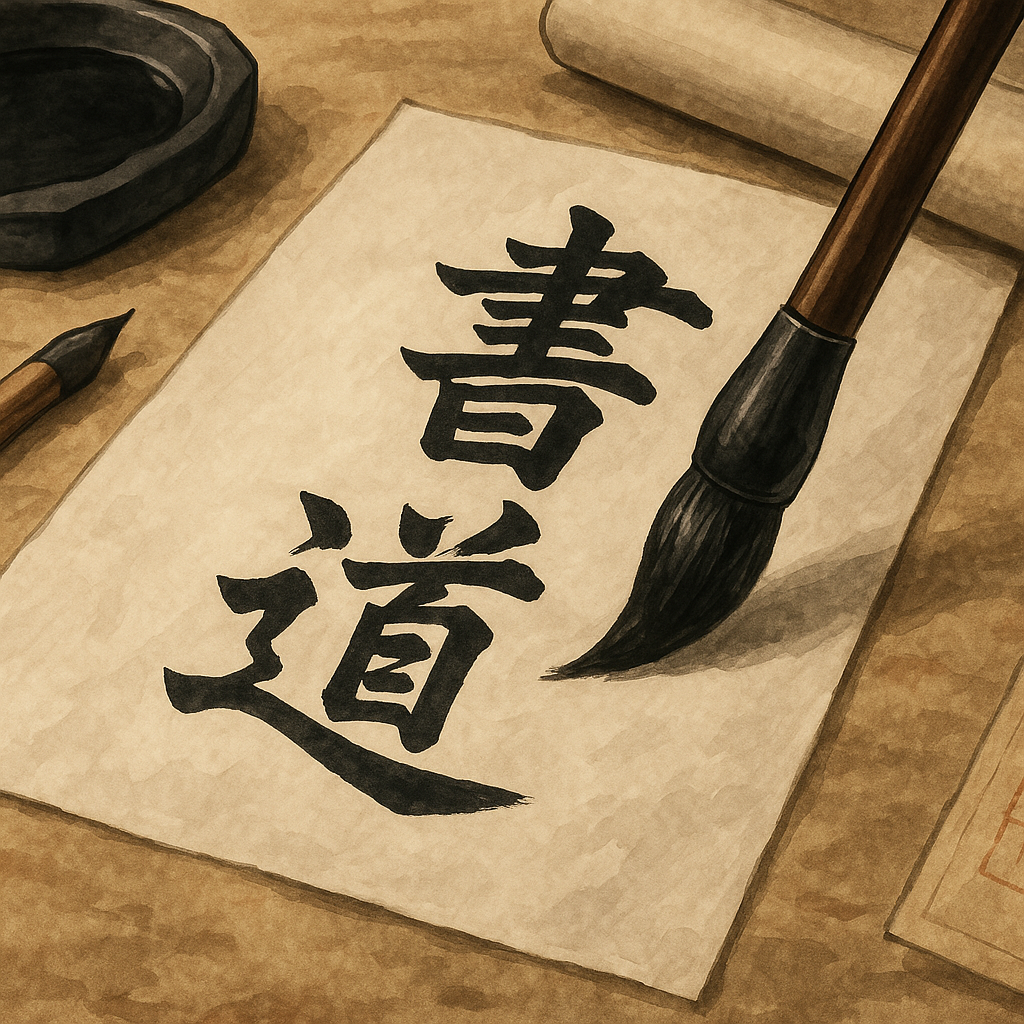Eastern Calligraphy – The Meaning Behind the Art of Brush Writing
In the East, the brush is not merely a tool for writing—it is an instrument of the spirit. Eastern calligraphy, particularly the traditions rooted in Chinese, Japanese, and Korean cultures, transcends written language. It is not only about forming characters but about expressing emotion, cultivating discipline, and connecting with the divine rhythm of the universe. To understand brush calligraphy is to understand a deep part of the East’s cultural and philosophical identity.
1. The Brush as an Extension of the Soul
Eastern calligraphy begins with the brush—a delicate, flexible instrument traditionally made from animal hair and bamboo. Unlike Western pens or quills, the calligraphy brush responds to the slightest change in pressure, speed, and direction. A single stroke can capture tension or tranquility, strength or elegance. The brush becomes a direct extension of the calligrapher’s inner state, revealing mood, thought, and even spiritual alignment.
This is why many masters of calligraphy begin their practice with meditation. The hand must be steady, but more importantly, the mind must be clear. Calligraphy, in this sense, is not only a visual art—it is a spiritual practice.
2. Philosophical Roots: Taoism, Zen, and Confucianism
Eastern calligraphy is profoundly influenced by Eastern philosophies. In Taoism, the concept of "wu wei" (non-action or effortless action) is mirrored in the flow of ink. The best strokes are made not by force but by harmony with the brush’s nature. In Zen Buddhism, the blank space, or "ma," holds just as much meaning as the ink itself. Silence, emptiness, and balance are honored.
Confucianism, on the other hand, emphasizes moral cultivation through discipline, which is deeply embedded in the practice of perfecting characters. A single character may be written hundreds of times to achieve the perfect balance of proportion, line, and soul.
3. More Than Words: The Power of a Single Character
In Eastern calligraphy, a single character can hold immense power. Take the Chinese character for “peace” (和), or the Korean character for “love” (사랑). These are not just words—they are visual poems. Their forms are carefully composed, and when executed with mastery, they evoke the very essence of their meaning.
Unlike alphabetic writing systems, East Asian scripts are ideographic—each character is a symbol with layered meaning. Thus, writing becomes painting, and painting becomes philosophy. The boundary between language and art disappears.
4. Styles and Personal Expression
Just as there are different styles of painting, there are distinct styles of calligraphy. From the strict elegance of kaishu (regular script), to the dynamic energy of caoshu (cursive script), each form offers a different tone, mood, and purpose. In Japan, the art form is known as shodo (書道), or “the way of writing,” reflecting its status as a disciplined yet expressive path.
What sets Eastern calligraphy apart is how deeply personal it can be. No two artists write the same character in exactly the same way. The brushwork reveals not just skill, but the personality, rhythm, and even emotional history of the artist.
5. Calligraphy Today: A Bridge Between Past and Present
In the modern era, Eastern calligraphy continues to thrive—not only as a traditional art but as a form of contemporary expression. From gallery exhibitions to digital animations, brush calligraphy adapts while preserving its essence. Artists combine ancient techniques with modern aesthetics, proving that the brush still speaks in our fast-paced world.
For many, especially younger generations rediscovering their roots, calligraphy becomes a way to connect with ancestors, culture, and self. It teaches patience in a world of immediacy, and harmony in a time of noise.
Q&A
Q1. Is Eastern calligraphy only about writing Chinese or Korean characters?
Not at all. While it originated in writing logographic scripts, its principles of balance, rhythm, and brush control apply to various writing systems and artistic expressions.
Q2. Can anyone learn brush calligraphy, or is it only for artists?
Anyone can learn. In fact, beginners often discover unexpected calmness and joy in the process. All it takes is patience, practice, and an openness to learn.
Q3. What materials do I need to start practicing Eastern calligraphy?
You’ll need a brush (fude), ink (sumi), inkstone (suzuri), and rice paper (hanshi). A peaceful space and focused mind are also essential.
Q4. How is Eastern calligraphy different from Western calligraphy?
Western calligraphy focuses more on uniformity and penmanship, while Eastern calligraphy emphasizes expressive brush movement, emotional flow, and philosophical depth.
Q5. Why do some characters in calligraphy look abstract or distorted?
This is especially common in cursive or semi-cursive styles, where flow and spontaneity are prioritized over legibility. It’s not about reading—it’s about feeling.

